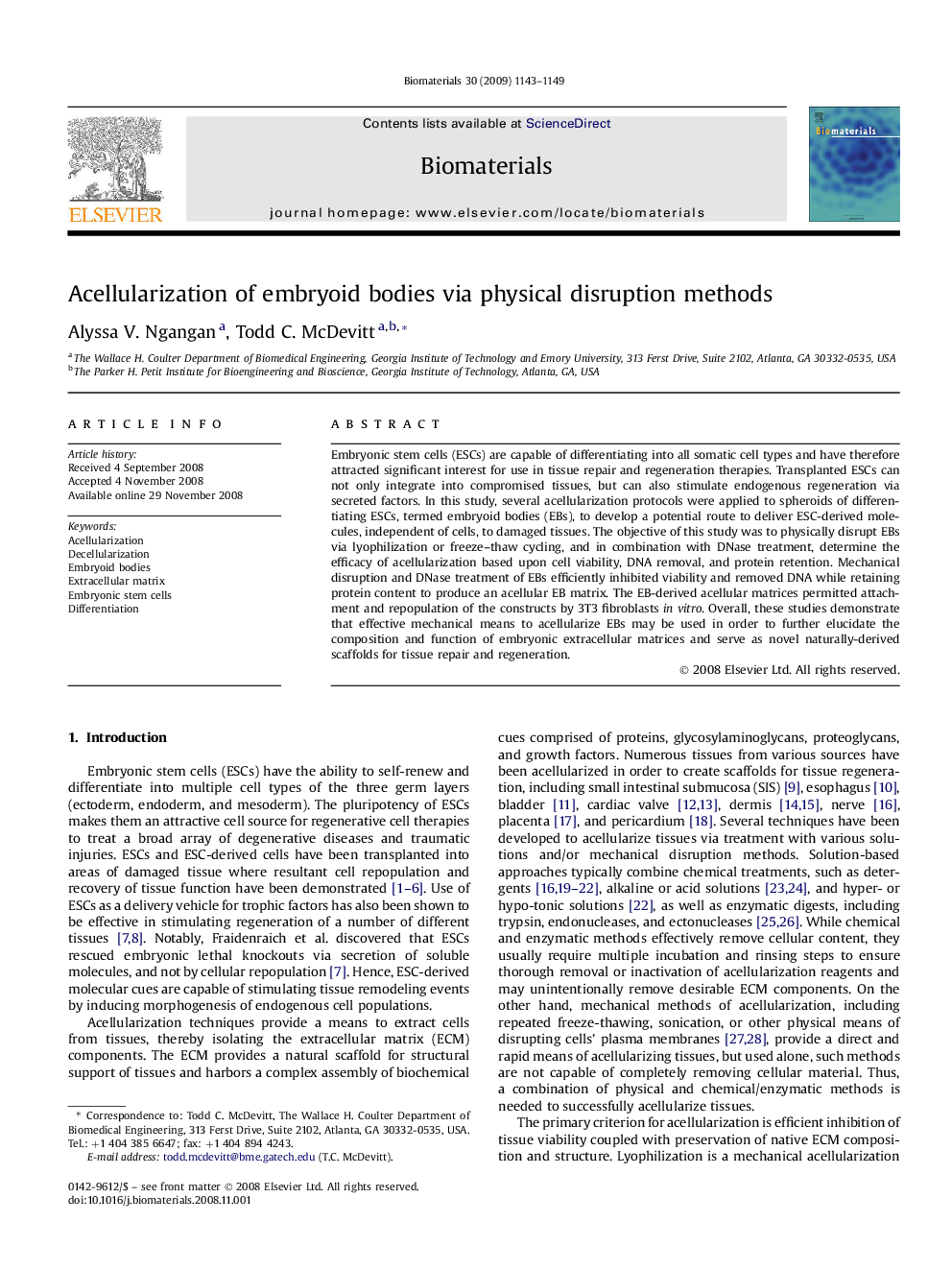| Article ID | Journal | Published Year | Pages | File Type |
|---|---|---|---|---|
| 9263 | Biomaterials | 2009 | 7 Pages |
Embryonic stem cells (ESCs) are capable of differentiating into all somatic cell types and have therefore attracted significant interest for use in tissue repair and regeneration therapies. Transplanted ESCs can not only integrate into compromised tissues, but can also stimulate endogenous regeneration via secreted factors. In this study, several acellularization protocols were applied to spheroids of differentiating ESCs, termed embryoid bodies (EBs), to develop a potential route to deliver ESC-derived molecules, independent of cells, to damaged tissues. The objective of this study was to physically disrupt EBs via lyophilization or freeze–thaw cycling, and in combination with DNase treatment, determine the efficacy of acellularization based upon cell viability, DNA removal, and protein retention. Mechanical disruption and DNase treatment of EBs efficiently inhibited viability and removed DNA while retaining protein content to produce an acellular EB matrix. The EB-derived acellular matrices permitted attachment and repopulation of the constructs by 3T3 fibroblasts in vitro. Overall, these studies demonstrate that effective mechanical means to acellularize EBs may be used in order to further elucidate the composition and function of embryonic extracellular matrices and serve as novel naturally-derived scaffolds for tissue repair and regeneration.
